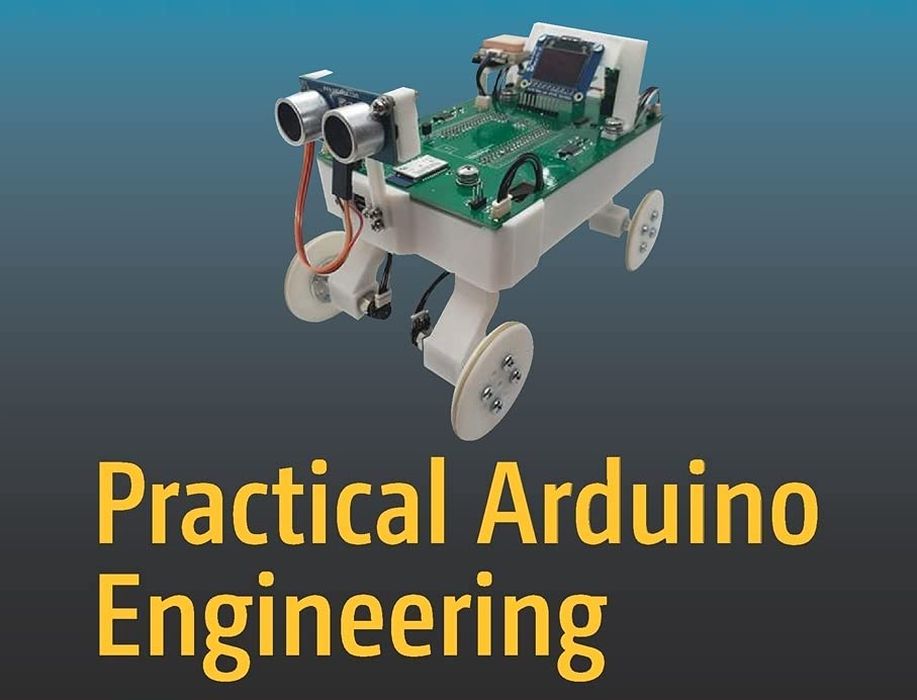
This week’s selection is “Practical Arduino Engineering: End to End Development with the Arduino, Fusion 360, 3D Printing, and Eagle” by Harold Timmis.
The Arduino is an enormously popular platform for embedded computing. “Arduino boards” are microcontrollers specifically designed for this purpose and can be easily used in a wide variety of application environments. They are single board computers equipped with inputs for sensors and outputs for control mechanisms.
They are also quite inexpensive, making it very feasible to design “smart” objects powered internally by an Arduino.
The process is to design a system, including inputs, outputs, sensors, motors, lights, etc., all within an appropriate housing — which can and often is 3D printed. Software for the Arduino is composed and downloaded into the board, and you’re all set.
But is it really as simple as that?
It turns out there is much more to the story, and that’s where this book comes in.
The book begin with an overview of the Arduino process and tools required to proceed. Timmis provides a lifecycle of a typical Arduino project, where one proceeds through requirements, hardware, software, prototyping and testing.
Timmis provides a detailed explanation of Ardunio software, which is a bit different from conventional software found in the IT industry. Here there are real-time concerns where communication with external hardware require different approaches.
There’s also an entire chapter dedicated to 3D modeling. The idea here is that whatever you’re making, you surely will require a case or other structures to make it work. These are almost always custom-designed and 3D printed because no one sells the unique parts required for your original Arduino product design. Timmis uses the popular Autodesk Fusion 360 tool for modeling, which is available at no charge to qualified individuals.
The chapter on 3D printing provides just the basics, explaining the fundamental workflow required, as well as the hardware and software involved. While Timmis does endeavor to explain how to operate a 3D printer, including typical troubleshooting, there’s a lot more to know. I recommend looking at this book for further information in that regard.
One of the important pieces in a typical Arduino system is the PCB, or printed circuit board. Again, this must be custom-designed, and Timmis shows how this is done with Eagle, a commonly used PCB design tool.
Finally, Timmis shows how to design typical motion systems that can be driven by an Arduino.
To bring all the knowledge together, Timmis provides several detailed Arduino projects, and shows how one would go about testing the Arduino-powered device to ensure it works properly.
If you’re contemplating an idea for a new smart device but have little knowledge of Arduino technology and how to use it, this book should be an excellent place to start learning.
We’re an Amazon Associate and earn a small fee from qualifying purchases. Help support our 3D print news service by checking out this book!
Via Amazon
